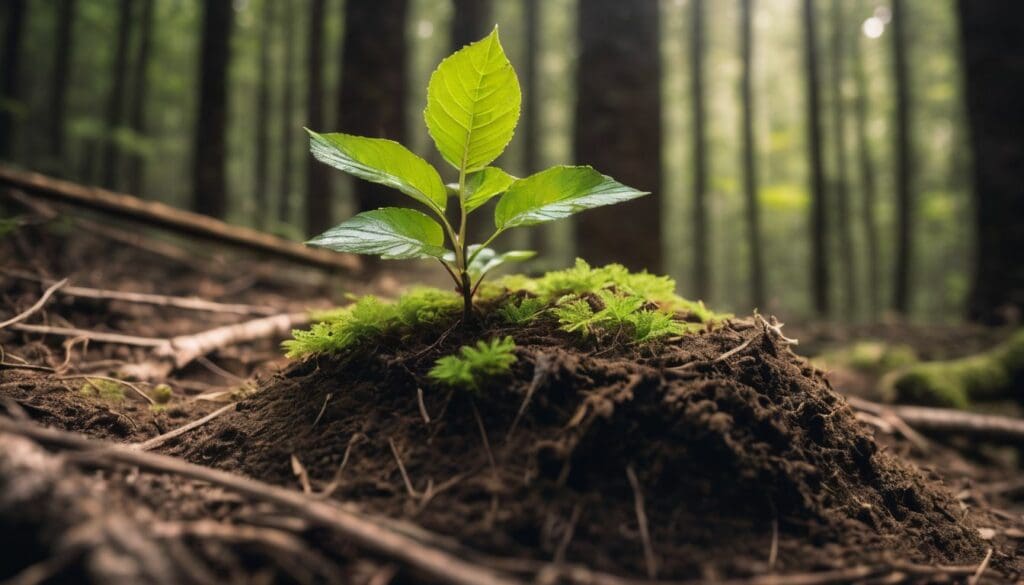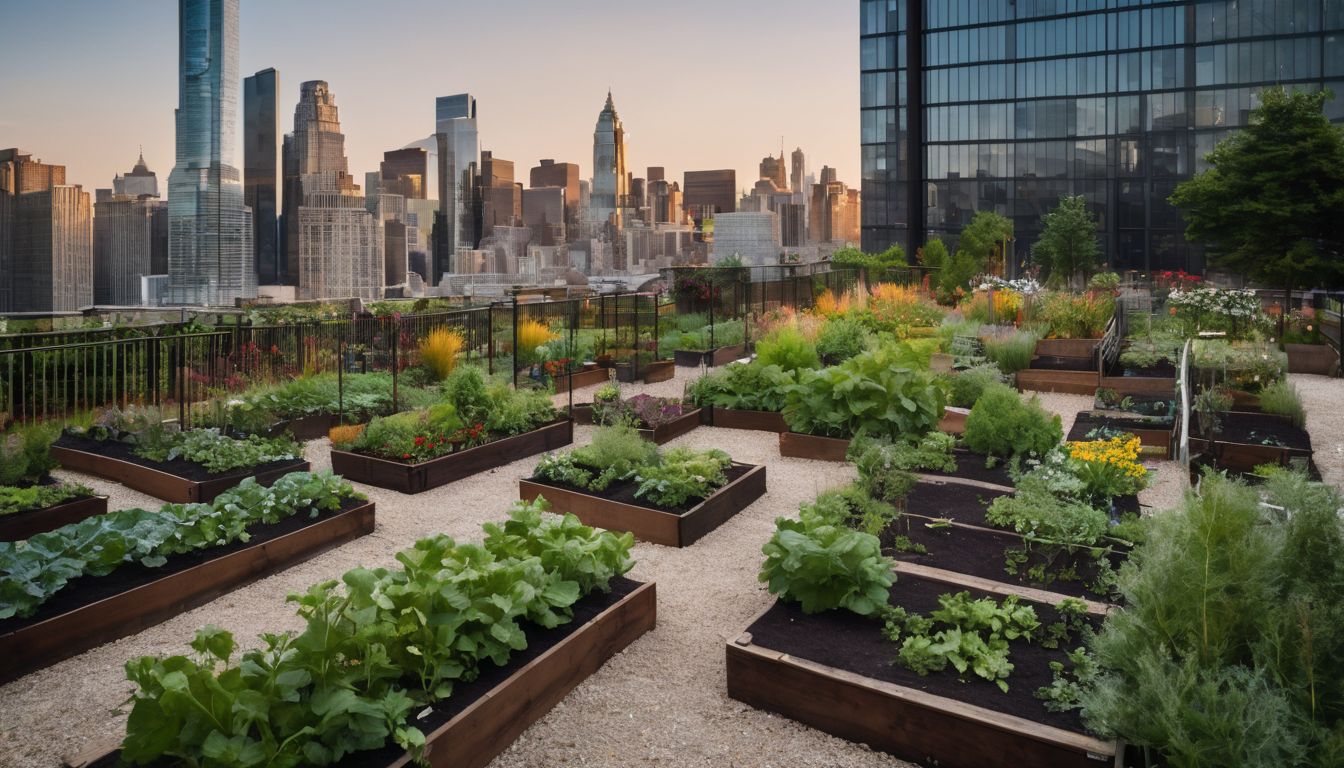Are you a young person passionate about the environment and looking for guidance on how to turn that passion into a career? Starting a Green Youth Mentorship Program may be the answer. Did you know that mentorship can significantly impact career success, especially in industries like sustainability and conservation? In this article, we will explore the steps to launch your own mentorship program for environmentally conscious youth. Join us as we dive into the world of green mentorship and empower our future environmental leaders.
Key Takeaways
- Youth mentorship is crucial for inspiring young people to engage in sustainability and environmental stewardship. Matching enthusiastic youths with experienced green industry professionals can foster skill development and eco-friendly initiative leadership.
- Structured programs with clear goals, guidelines, and resources enhance the quality of mentoring experiences. This approach helps track progress effectively while creating meaningful impacts on mentees’ knowledge, confidence, and advocacy skills.
- Successful mentorship programs incorporate various formats—such as one-on-one or group mentoring—to cater to different learning styles and needs within the environmental community. Flexibility in these frameworks allows for a more inclusive range of participants.
- Sustainable mentorship programs require ongoing staff development, regular evaluations, advocacy work, and innovative solutions to challenges like engagement consistency or funding security for long-term success.
- Mentor – mentee relationships are foundational to program outcomes; they empower young individuals through guidance and support from mentors who share their experiences within conservation efforts, contributing positively to the future of environmental leadership.
Importance of youth mentorship
Youth mentorship is a powerful tool to ignite passion for sustainability and environmental stewardship among young people. By connecting them with experienced mentors in the green industry, we give these emerging leaders a chance to learn directly from those who are already making an impact.
This guidance can inspire and equip them with the skills they need to drive ecofriendly initiatives forward.
Mentorships provide valuable hands-on experience and a deeper understanding of environmental issues. Young individuals gain confidence as they navigate challenges with their mentors’ support, fostering a new generation ready to tackle climate change awareness and conservation programs head-on.
Through this practical learning process, mentees develop into advocates for sustainable living, prepared to innovate solutions within their communities.
Benefits of mentoring in the green industry
Mentoring in the green industry forges a vital bridge between experienced environmental professionals and enthusiastic newcomers keen to make a difference. It equips young adults with the insights and skills necessary to navigate the complex world of conservation, sustainability, and environmental technology.
As mentors share their expertise on everything from renewable energy projects to sustainable business practices, mentees gain an edge in launching successful green careers.
This exchange of knowledge fosters leadership qualities among youth, encouraging them to spearhead eco-conscious initiatives within their communities and beyond. Moreover, mentorship programs often expose high school students and other young individuals to grant opportunities that can turn innovative ideas into tangible action for environmental betterment.
This hands-on experience is invaluable as it cultivates a future workforce deeply committed to nurturing our planet’s health. Next up, we delve into understanding mentoring programs —exploring formats designed for impactful learning experiences in this thriving field.
Understanding Mentoring Programs
Exploring the different types of mentoring formats and the benefits of having a structured program can help you design an effective green youth mentorship initiative. Read on to learn more about building a successful mentoring program for young environmental leaders.
Different types of mentoring formats
Different types of mentoring formats play a crucial role in shaping youth mentorship programmes. Here are various formats to consider:
- One-on-one mentoring: This format involves pairing one mentor with one mentee to provide individualised attention and guidance.
- Group mentoring: In this format, one mentor works with a small group of mentees, fostering a sense of community and peer support.
- E-mentoring: Utilising digital platforms, e-mentoring allows mentors and mentees to connect virtually, providing flexibility in communication and interaction.
- Peer mentoring: Mentoring between peers within similar age groups provides relatability and shared experiences, promoting mutual learning.
- Reverse mentoring: This innovative format involves younger individuals sharing their knowledge with older mentors, facilitating a two-way learning process.
Benefits of having a structured program
A structured mentorship programme offers clear guidelines and a framework for both mentors and mentees, ensuring a focused and efficient experience. By providing a step-by-step plan, the programme helps participants understand their roles, responsibilities, and expectations, leading to meaningful and impactful interactions.
Additionally, having a structured programme allows for better tracking of progress and outcomes, making it easier to assess the effectiveness of the mentorship initiative.
Furthermore, a well-organised programme encourages accountability and commitment from both mentors and mentees. It sets specific milestones and timelines for activities, fostering a sense of purpose and direction throughout the mentorship journey.
Designing Your Mentorship Program
Establishing clear goals and objectives for your mentorship program is crucial to its success, as it provides a roadmap for both mentors and mentees to follow. To learn more about crafting an effective mentorship program template, read the full blog post.
Establishing goals and objectives
Set clear and specific goals for your green youth mentorship program. Determine what you aim to achieve and outline measurable targets. Define the key objectives that will guide the overall direction of your mentoring initiative, ensuring they align with environmental education and youth leadership principles.
Consider factors like environmental activism and youth empowerment, designing goals that reflect the unique needs of young individuals in the conservation field. By carefully establishing these goals and objectives, you’ll create a solid framework for an effective mentorship program tailored to support high school students’ growth in environmental stewardship.
Crafting a mentorship curriculum for young adults requires thoughtful consideration of targeted outcomes, integrating core values such as sustainability and community engagement into program objectives.
Creating a mentorship program template
After establishing clear goals and objectives for your mentorship programme, the next step is creating a mentorship programme template to provide a structured framework for the initiative. This template will serve as a guideline to ensure that all aspects of the programme are well-defined and organised.
- Define Programme Structure: Begin by outlining the structure of the mentorship programme, including the duration, frequency of meetings, and overall timeline. This helps in setting expectations for both mentors and mentees.
- Establish Programme Guidelines: Develop clear guidelines that outline roles and responsibilities for both mentors and mentees. This includes communication protocols, confidentiality agreements, and expectations for professional conduct.
- Design Mentorship Resources: Create resources such as mentoring handbooks, training materials, and development plans to support both mentors and mentees throughout their journey.
- Incorporate Feedback Mechanisms: Integrate feedback mechanisms into the programme template to continuously collect input from participants, enabling regular evaluation and improvement.
- Implement Evaluation Tools: Establish tools for assessing the effectiveness of your mentorship programme, such as surveys, performance metrics, or progress tracking mechanisms.
- Outline Success Measures: Define key performance indicators (KPIs) that will demonstrate the success of the mentorship programme, ensuring alignment with its overarching goals.
- Include Flexibility Measures: Incorporate flexibility into your template to accommodate various learning styles and individual needs of participants within the green youth mentorship initiative.
- Emphasise Sustainability Strategies: Integrate sustainability strategies into your template to ensure a long-term impact of the mentorship programme beyond its initial phases.
- Foster Inclusivity: Ensure that your template promotes inclusivity by providing equal opportunities for all interested individuals while considering diversity in experience and backgrounds.
- Align with Environmental Objectives: Tailor your mentorship programme template to align with environmental objectives and principles, emphasising sustainable practices within mentoring activities.
Attracting Participants
Utilise social media and community outreach to attract potential mentors and mentees, highlighting the unique opportunities for personal and professional growth in the green industry.
To learn more about how to successfully launch a Green Youth Mentorship Programme, keep reading!
Marketing and recruitment strategies
To attract participants to your green youth mentorship programme, begin by crafting a compelling marketing plan. Highlight the benefits of the programme for both mentors and mentees, emphasising the opportunity to make a positive impact on the environment.
Utilise social media platforms and local community networks to spread the word about your initiative. Consider collaborating with schools, environmental organisations, and businesses that align with your programme’s mission.
Additionally, creating engaging promotional materials such as brochures or videos can help capture the attention of potential participants. Finally, offering incentives or recognition for mentors and mentees who join the programme can further enhance recruitment efforts.
Identifying potential mentors and mentees involves reaching out to various channels within environmentally conscious communities. Connect with individuals who have knowledge in environmental conservation or are passionate about sustainability through networking events or online forums.
Engage with local high schools and universities to tap into young adults’ interest in environmental causes. Furthermore, consider partnering with eco-friendly companies that may already have employees interested in mentoring youth in this sector.
Identifying potential mentors and mentees
Identify individuals with expertise in conservation or environmental fields. Look for candidates with a passion for mentoring and supporting youth development. Consider individuals who have experience working with young people and can provide guidance and inspiration.
Matching Mentors and Mentees
Considerations for successful matches include aligning mentor and mentee interests, skills, and goals, as well as ensuring a good personality fit – find out more about building strong mentor-mentee relationships in our upcoming blog post.
Considerations for successful matches
To ensure successful mentor-mentee matches, it is important to consider the interests, skills, and goals of both parties. Matching mentors and mentees based on shared values and career aspirations can lead to more meaningful relationships.
It’s also crucial to assess personalities and communication styles to foster a positive dynamic. Providing training for mentors on effective coaching techniques can further support successful matches in the green industry.
When establishing mentorship pairs, it’s vital to take into account the availability and commitment level of both mentors and mentees. Clear expectations should be communicated from the outset regarding time commitments and frequency of interactions.
Additionally, creating a structured framework for goal setting and progress tracking can help align mentor-mentee expectations within the program.
Importance of mentor-mentee relationships
Mentor-mentee relationships play a crucial role in the success of any youth mentorship program. The bond between a mentor and mentee provides young individuals with guidance, support, and inspiration as they navigate their career paths in the green industry.
A positive relationship empowers mentees to set and achieve goals while developing valuable skills and knowledge essential for environmental conservation efforts.
Establishing open communication channels is vital for fostering trust within mentor-mentee relationships. Transparency ensures that mentees feel comfortable seeking advice, sharing challenges, and exploring new opportunities under the guidance of their mentors.
These relationships create an environment where both parties can learn from each other’s experiences, ultimately contributing to the overall growth and development of future environmental leaders.
Maintaining a Sustainable Program
Ensure ongoing program sustainability through staff development and growth, program evaluation, advocacy efforts, and addressing potential challenges with innovative solutions. Read on to discover more about maintaining a successful green youth mentorship program!
Ensuring program sustainability
To ensure the sustainability of the mentorship programme, continuous staff development and growth are essential. This involves providing training opportunities for mentors and mentees to enhance their skills and knowledge in the green industry.
Additionally, regular programme evaluation is crucial to assess its effectiveness and make necessary adjustments for improvement. Advocacy efforts can also help secure funding or support from relevant organisations, ensuring the longevity of the youth mentoring initiative.
Moving forward with “Staff Development and Growth”.
Staff development and growth
To ensure program sustainability, investing in staff development and growth is crucial. Providing ongoing training and professional development opportunities for mentors and program coordinators will enhance their skills and knowledge, ultimately benefiting the mentorship program as a whole.
Empowering staff with the necessary resources to expand their expertise and leadership abilities will contribute to the continued success of the green youth mentorship initiative.
Encouraging continuous learning and skill enhancement among staff members through workshops, seminars, and networking events fosters a culture of innovation within the mentorship program.
Nurturing professional growth not only equips individuals with updated knowledge but also motivates them to bring fresh perspectives that can positively impact the mentoring experience for both mentors and mentees.
Program evaluation and advocacy efforts
To ensure the longevity and success of your mentorship programme, it is crucial to implement effective evaluation and advocacy efforts. This will not only help in tracking the progress and impact of the programme but also in gaining support and promoting its value within the community. Here are some key steps to consider:
- Regular Evaluation: Conduct periodic assessments to measure the effectiveness of the programme in meeting its objectives. Gather feedback from both mentors and mentees to identify areas for improvement.
- Impact Assessment: Assess the tangible outcomes of the mentorship programme on the participating youth, including skill development, confidence building, and career readiness.
- Advocacy Initiatives: Engage with local environmental organisations, educational institutions, and community leaders to advocate for support and resources for your mentorship programme.
- Community Engagement: Organise events or workshops to showcase the achievements of the mentorship programme and raise awareness about its positive impact on nurturing environmentally conscious youth.
- Data Collection: Compile data on participant retention rates, success stories, and testimonials that demonstrate the value of the mentorship programme in creating future environmental leaders.
- Communication Strategy: Develop a clear communication plan to effectively convey the successes and benefits of the mentorship programme to potential supporters, funders, and stakeholders.
Potential challenges and solutions.
Upon implementing program evaluation and advocacy efforts, it’s crucial to anticipate potential challenges and have solutions in place. One challenge can be maintaining consistent engagement among mentors and mentees.
To address this, establishing regular check-ins and providing ongoing support can help keep participants active and committed. Another possible issue is matching mentors with the right mentees based on compatibility and shared goals.
This can be resolved by refining the matching process through detailed assessments of mentor-mentee interactions and feedback, ensuring successful pairings.
To maintain program sustainability, securing long-term funding may pose a challenge. Seeking grants specifically tailored to youth mentoring programs in the green industry can provide financial stability.
Conclusion
In conclusion, initiating a Green Youth Mentorship Program offers exciting opportunities for environmental enthusiasts. Young adults can gain valuable insights and guidance from experienced mentors in the green industry.
By establishing a structured program and focusing on sustainability, we can empower the next generation of environmental leaders. Building strong mentor-mentee relationships is crucial to nurturing future advocates for conservation and environmental protection.
FAQs
1. How do I start a Green Youth Mentorship Programme?
To launch a mentoring programme for youth, you can begin by crafting a unique mentorship framework tailored to young individuals interested in environmental issues.
2. What should be included in the curriculum for a youth mentoring programme?
When developing a mentorship programme curriculum, include activities that educate high school students on green practices and provide hands-on experiences with community projects.
3. Can my community organisation get help funding our Green Mentor Programme?
Yes, there are grants available specifically for youth mentoring programmes; look into these to support the establishment of your initiative financially.
4. Why is it important to have a mentorship guide when launching mentoring programmes?
A clear mentorship guide helps ensure that both mentors and mentees understand their roles and can make the most of your green mentorship programme’s benefits.
5. What are the first steps in forming a mentorship programme for high school students interested in environmental causes?
Begin by establishing goals and objectives then proceed to securing resources and recruiting passionate mentors who want to help shape future leaders through your youth mentoring framework.





